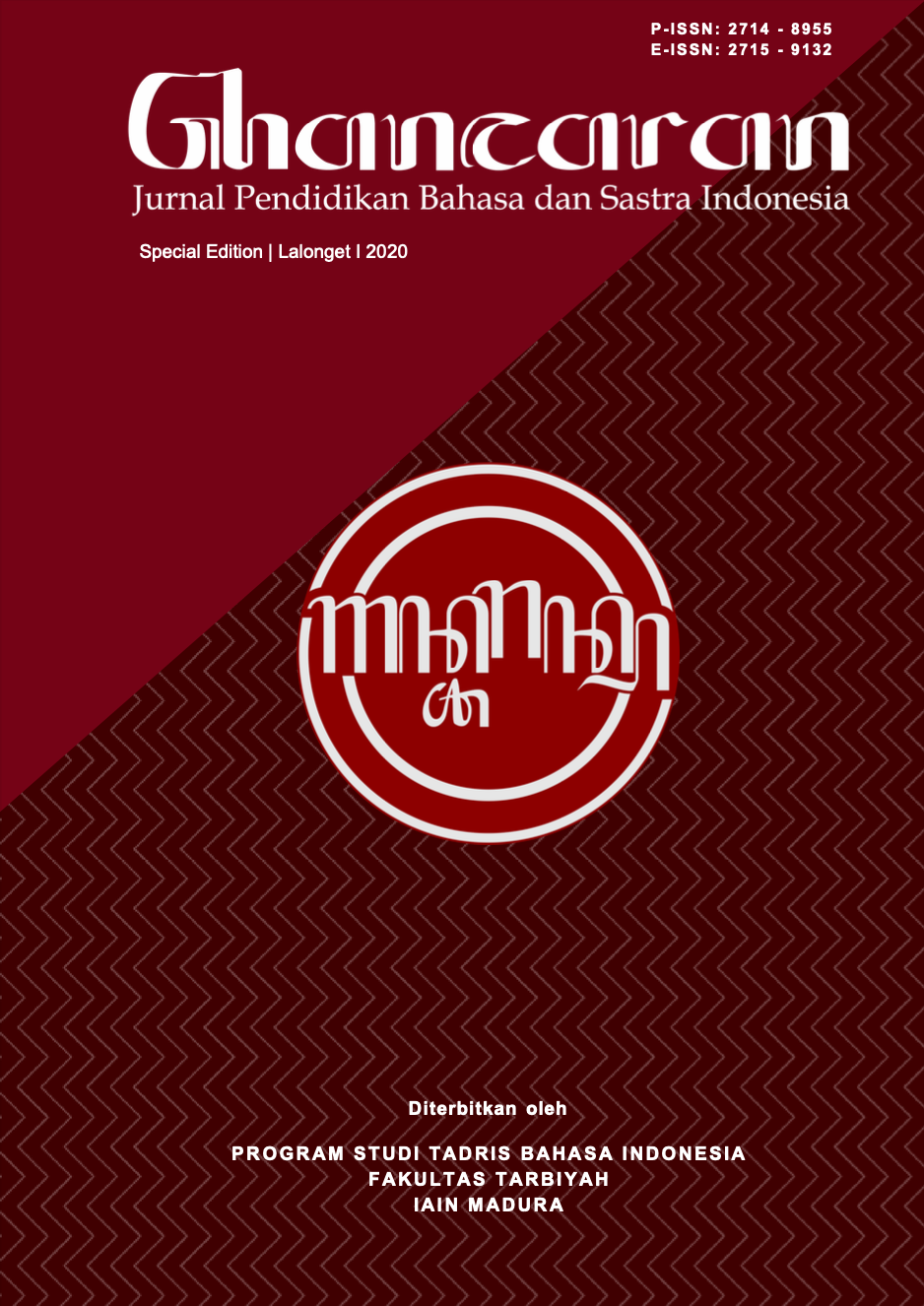INTERNASIONALISASI BAHASA INDONESIA MELALUI EKSPOSE VISUAL CERITA DAERAH MENGGUNAKAN KOMIK DIGITAL BILINGUAL
 Abstract views: 364
,
Abstract views: 364
,
 XML downloads: 273
XML downloads: 273
Abstract
This article discusses the use of digital comics as a medium of Indonesian language internationalization. Some things that are part of the study are the analysis of global Indonesian digital comics, the opportunity for space in developing digital comics as a medium of massive communication between language and language users, the use of regional wealth in Indonesia as a bearer of Identity, and visual exposure of regional stories as strategies Internationalization of Indonesian. The method of analysis uses exploratory studies with literature reviews, aimed at exploring digital world space and opportunities for the internationalization of Indonesian through the use of a wealth of language, literature and culture. The benefits of this are providing a basic foothold in supporting further research on the potential of literary and cultural languages in internationalizing Indonesian. The use of digital technology that is becoming popular has become a great opportunity for the development of various strategies. The results of the study in the form of key points as a key application of the strategy of internationalization of Indonesian by utilizing the local wealth of the work of the Indonesian people conceptually.
Downloads
References
Djiwandono, P. I. (2012). Meneliti itu Tidak Sulit: Metodologi Penelitian Sosial dan Pendidikan Bahasa. Yogyakarta: Deepublish.
Gloriani, Y. (2017). Konservasi dan Revitalisasi Bahasa sebagai Salah Satu Upaya Internasionalisasi Bahasa Indonesia. Jurnal Pendidikan Bahasa dan Sastra Indonesia, 11(2).
hidayah, N., & Sujono. (2019). Pengaruh Penggunaan Media Comic Book pada Pembelajaran Bahasa Arab bagi Mahasiswa Fakultas Ilmu Pendidikan Universitas KH. A. Wahab Hasbullah Jombang. Al-Lahjah, 3(2), 1-14.
Iskandar. (2017). https://www.liputan6.com/tekno/read/2954823/komik-digital-si-buta-dari-gua-hantu-meluncur-di-facebook. Retrieved from https://www.liputan6.com/: https://www.liputan6.com/
Kholid, I. (2017). Mortivasi dalam Pembelajaran Bahasa Asing. English Education: Jurnal Tadris Bahasa Inggris, 10(1), 61-71. doi:10.24042/ee-jtbi.v10i1.875
Miller, J. W., & McKenna, M. C. (2016). https://www.ccsu.edu/wmln/computers.html. Retrieved from https://www2.ccsu.edu/: https://www2.ccsu.edu/
Nasution, A. E., & Hidayah, M. W. (2019). E-KOMPEN (ELEKTRONIK-KOMIK PENDEK) sebagai solusi cerdas dalam meningkatkan minat baca masyarakat Indonesiadi era digital. Jurnal Iqra, 13(1), 105-114.
Ningrum, R. K., Waluyo, J. H., & Winarni, R. (2017). The 1st Education and Language International Conference Proceedings Center for International Languange Development of Unissula. 1, p. 732. Semarang: Unissula.
Ramadhan, B. S., & Rasuardie, R. (2020). Kajian Industri Komik Daring Indonesia: Studi Komik Tahilalats. JSRW: Jurnal Senirupa Warna, 8(1), 2-18.
Talani , N. S. (2014, Oktober). Esensi Interaksi Visual dalam Dunia Facebook yang Virtual. Jurnal komunikasi,, 9(1), 69-84.
Yanti, M., & Yusnaini. (2018). THE NARRATION OF DIGITAL LITERACY MOVEMENT IN INDONESIA. INFORMASI, 48(2), 243-255.
Zpalanzani, A. (2012). Pemetaan Komik Indonesia Periode Tahun 1995 - 2008. Wimba: Junrla Komunikasi Visual dan Multimedia, 4(1), 75-91. Retrieved from http://journals.itb.ac.id/index.php/wimba/article/view/10839/4025
Ghancaran: Jurnal Pendidikan Bahasa dan Sastra Indonesia uses an Open Access Policy under the Creative Commons Attribution-ShareAlike 4.0 International License. Authors publishing in this journal agree to the following terms:
- Ghancaran Journal holds the copyright and grants the journal rights for first publication with the work simultaneously licensed under a

The work is distributed under Creative Commons Attribution-ShareAlike 4.0 International License which allows others to share, copy, and redistribute the material in any media or format and adapt, remix, change, and develop the material even for commercial purposes, as long as it is stated credit and license derivative works under similar terms. - Authors may make additional contractual arrangements for non-exclusive distribution of the journal's published work version.
- Authors are permitted to post their work online (e.g., in institutional repositories or on their websites) before and during submission, as doing so may lead to productive exchange.



















